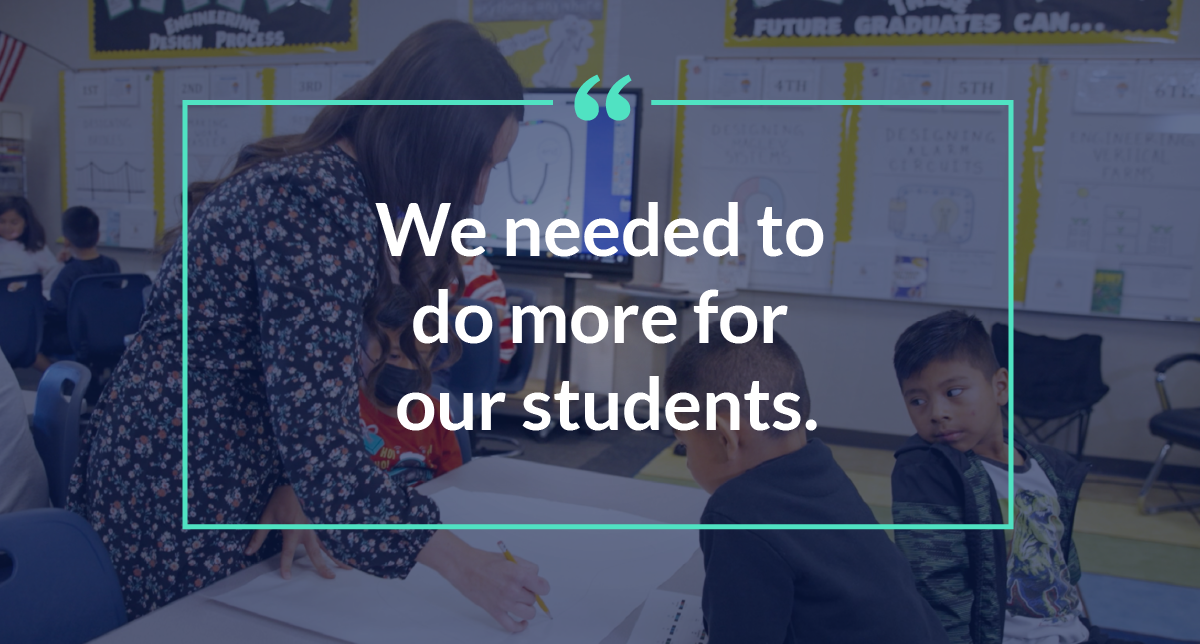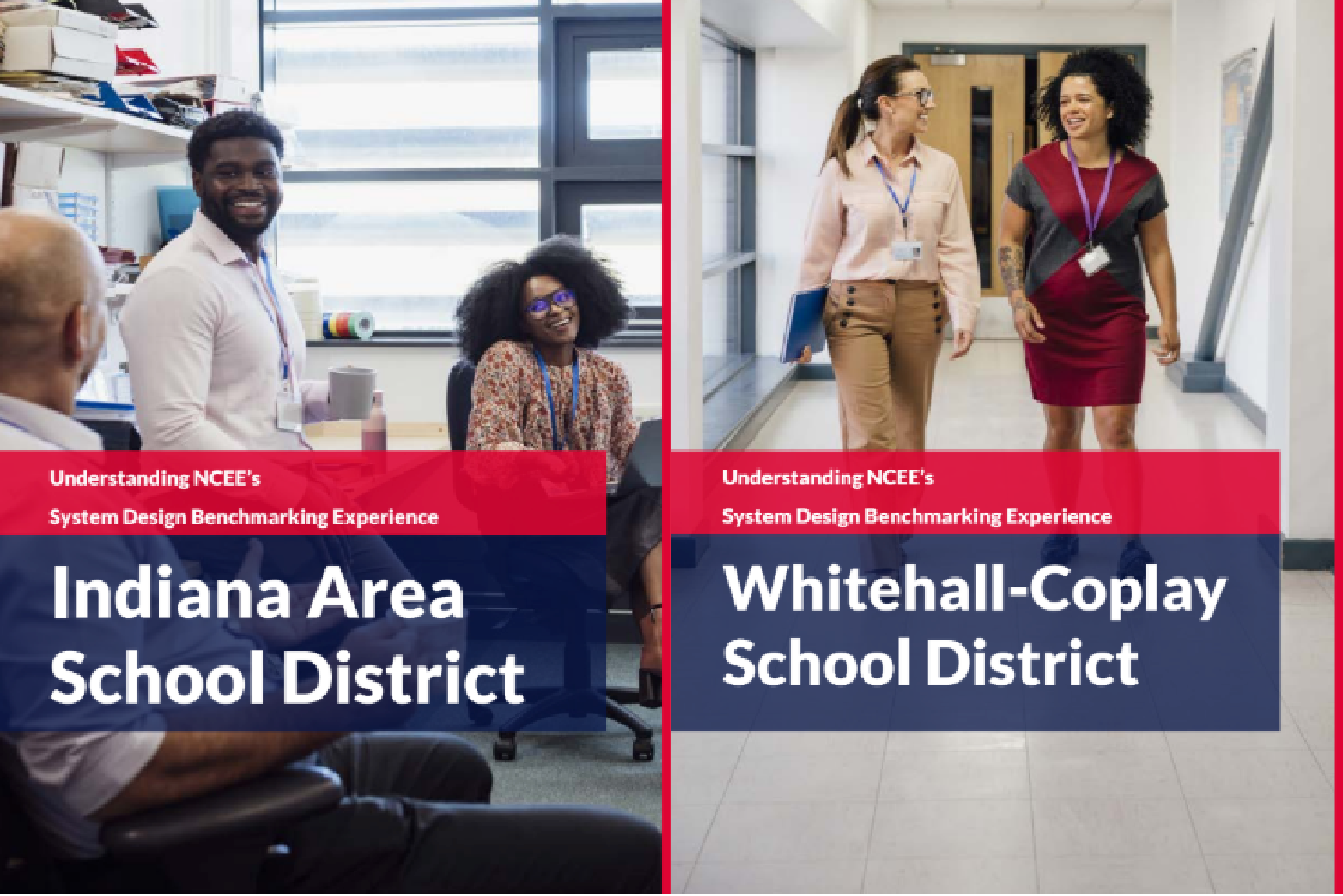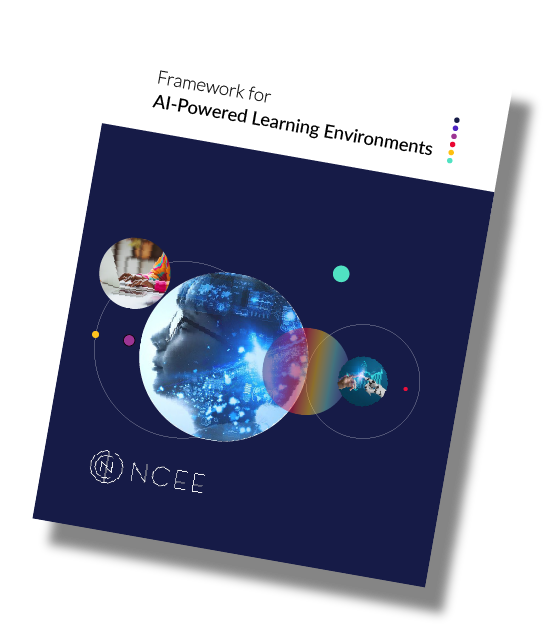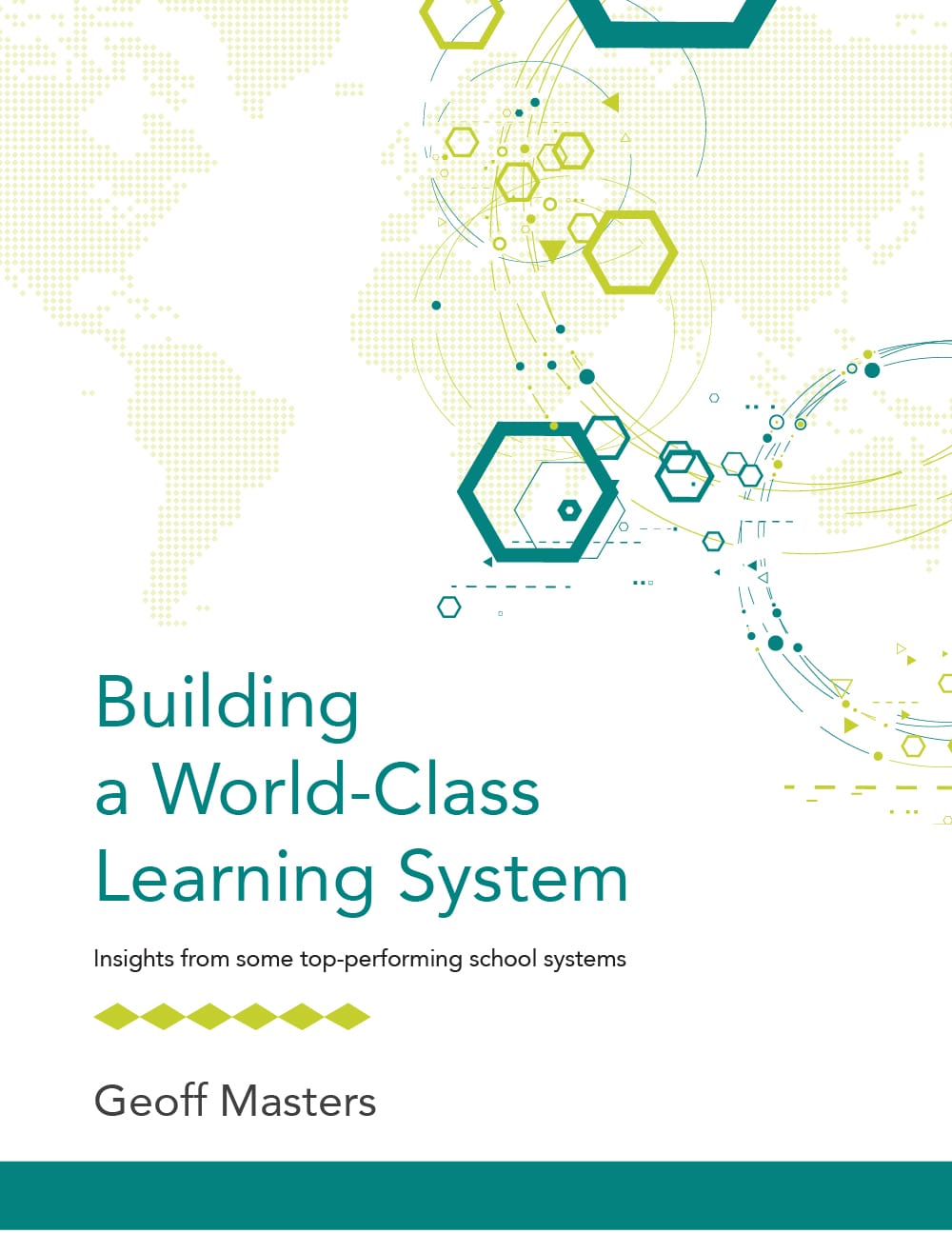The goal was clear and compelling: to engineer an educational system that isn’t just about maintaining standards but setting them.
How can we think differently about using time to enable success in teaching and learning? Explore new ways of thinking creatively about structuring time in Grades 1-9.
This case study explores how the U.S. Department of Defense Education Activity has produced both high student performance and reduced achievement gaps, over several NAEP administrations.
These case-studies explore the strategic changes two Pennsylvania school districts achieved through a partnership with NCEE via the System Design Benchmarking (SDB) program.
From math content and instructional time to teacher support, we explore domestic and global strategies and inspiration to boost math success for U.S. students.
This framework will help leaders create short-term and long-term strategies for integrating AI and other disruptive technologies into their learning systems.
In this webinar, hosted by NCEE in collaboration with OECD, education experts discuss the 2022 PISA Mathematics results and their implications for U.S. education.
McComb School District has undertaken an initiative that not only redefines their approach to education, but also serves as a beacon for districts facing similar challenges.
These in-depth case studies look critically at how Estonia and Finland have built world-class education systems for today, and how each system is positioning itself for the future.
By studying high-flying schools around the world, some district leaders in the U.S. are driving transformative changes to yield better results.
U.S. schools and districts can glean valuable insights from global leaders on attracting and preparing teachers who will empower all learners today and equip them for the future.
The result of a multi-year study, this book explores how five school systems—British Columbia, Estonia, Finland, Hong Kong and South Korea—have been rethinking and reforming their schools systems.













